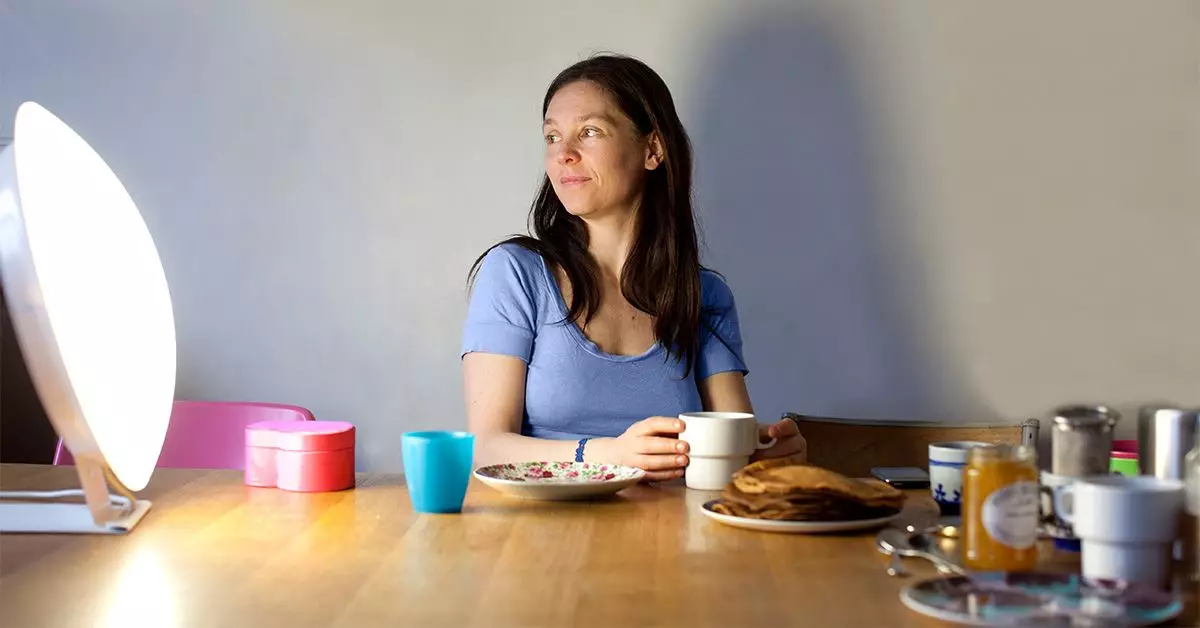As the daylight Hours shorten and the sun’s warmth diminishes during the winter months, an unsettling phenomenon occurs for many individuals: the emergence of Seasonal Affective Disorder (SAD), a mood disorder characterized by depressive episodes that reoccur year after year. Originally coined seasonal affective disorder, this condition has evolved in understanding, now recognized as major depressive disorder with a seasonal pattern. It’s not just the absence of vibrant summer days that makes winter tough; the psychological weight of limited sunlight can lead to lethargy, apathy, and a severe drop in mental well-being. While the winter variant is the most recognized form of SAD, some people find it afflicts them even during the sun-drenched months, highlighting a paradox of light and darkness.
The Science Behind Phototherapy
Phototherapy, or light therapy, has emerged as a powerful ally in combating seasonal depression. This innovative treatment employs brightly lit light boxes that simulate the sun’s rays, delivering essential wavelengths of light. For those grappling with winter-pattern seasonal depression, exposure to this artificial sunlight can stimulate significant changes in mood and energy levels. The science is compelling: regular use of such lightboxes, ideally for over 30 minutes each morning in the darker months, can help reset our circadian rhythms—the internal clock regulating our sleep-wake cycles.
Health professionals have pointed out that this artificial sunlight can significantly lower melatonin production, the hormone that often contributes to fatigue and sleepiness, while also lifting serotonin levels, which are pivotal for mood enhancement. However, while the therapeutic potential of phototherapy is promising, ongoing research continues to unravel its full capabilities. Is it a miracle cure or merely a helpful adjunct? The conversation is still in progress.
Requirements for Effective Light Therapy
The details surrounding effective light therapy are critical for real efficacy. Experts recommend using light boxes that typically emit an intensity of around 10,000 lux, ensuring the device doesn’t give off harmful UV rays. It should have a substantial screen area, ideally over 200 square inches, enabling a broader exposure to the therapeutic light as one goes about their morning routine. Patients should simply place the light box at eye level, angle it downward, and go through their normal daily activities—be it reading the morning news or sipping on coffee.
This flexibility allows individuals to integrate phototherapy seamlessly into their lives, a key factor in adherence to treatment plans. However, it’s essential to recognize that not all light therapy devices are created equal; choosing the right one is paramount for ensuring optimal results.
Phototherapy: An Alternative to Medication
One of the noteworthy aspects of light therapy is its role as a potential alternative—or complement—to conventional antidepressants. For individuals who may be reluctant to start or continue medication, whether due to side effects or personal preference, light therapy presents itself as an alluring option that carries minimal adverse reactions. Particularly for vulnerable populations—like pregnant women or seniors who may face complications with pharmacological interventions—phototherapy can be both a safe and effective approach.
It’s crucial to approach this therapy with caution, however, as it may not be suitable for everyone. Individuals suffering from certain eye conditions or skin sensitivities must tread carefully, as the bright exposures may pose certain risks. Consultation with a healthcare provider before embarking on this journey remains an essential step in identifying suitability and preventing unwanted side effects.
Anecdotal Evidence and Emerging Trends
Beyond clinical evidence, countless testimonials from individuals who have embraced phototherapy attest to its life-enhancing potential. Many find that incorporating bright light exposure into their routine not only alleviates feelings of sadness but also enhances creativity, productivity, and overall vitality during the dreary winter days. This anecdotal evidence serves to fuel interest and exploration of phototherapy’s broader applications beyond just seasonal affective disorder. Could this therapy inspire new avenues for treating anxiety disorders, chronic fatigue, or even burnout? The evolving landscape of mental health treatment only hints at the potential behind this radiant remedy.
In a world facing increasing mental health challenges, the search for effective, accessible therapies is paramount. While light therapy isn’t a panacea, it undeniably shines as a beacon of hope for those overwhelmed by the weight of winter darkness. As we delve into the diverse ways our modern lives intersect with our mental health, embracing solutions like phototherapy might be a step toward brighter tomorrows—quite literally.

